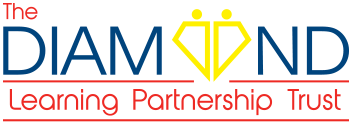Impetigo
How is impetigo treated?
It's possible for impetigo to clear up spontaneously within three weeks. But because it's so contagious, treatment is recommended. If you suspect impetigo, contact your GP because treatment should take place preferably before the child infects other children.
Before applying treatment to the surface of the skin: wash the affected areas with soap and water and remove the crusts, allowing the skin to dry in the air.
Many GPs choose to treat impetigo with bactericidal ointment, such as fusidic acid (Fucidin) or mupirocin (Bactroban), but in more severe cases oral antibiotics, such as flucloxacillin (eg Floxapen) or erythromycin (eg Erythrocin) are necessary.
It's important to remove the scabs before applying ointment because the bacteria that cause the disease live underneath them.
When can my child begin to mix again with other children?
A preschool child should not return to nursery school or playgroup until the scabs have fallen off and he or she is no longer contagious. Small children will touch and scratch their scabs and therefore run the risk of infection.
Schoolchildren can normally return to their classes after one week from the start of topical treatment, or after 48 hours from the start of oral antibiotic therapy, even with scabs – as long as they remember not to scratch or touch them.
Above all, they must remember to wash their hands regularly and only use their own comb, brush, facecloth or towel.
It's important that the school fully understands the nature of impetigo and that the presence of scabs does not necessarily mean that person remains infectious.
Good advice
- Cut your child’s nails short and encourage them not to scratch their scabs, pick their nose, bite their nails or suck their fingers.
- If your child already has eczema seek advice and effective treatment.
- Always remember to wash your hands after having touched your own or your child's scabs.
- Teach your child to wash his or her hands regularly and always give them their own facecloth and towel.
- Explain to your child why they need to pay special attention to hygiene and avoid touching their scabs.
How is impetigo treated?
It's possible for impetigo to clear up spontaneously within three weeks. But because it's so contagious, treatment is recommended. If you suspect impetigo, contact your GP because treatment should take place preferably before the child infects other children.
Before applying treatment to the surface of the skin: wash the affected areas with soap and water and remove the crusts, allowing the skin to dry in the air.
Many GPs choose to treat impetigo with bactericidal ointment, such as fusidic acid (Fucidin) or mupirocin (Bactroban), but in more severe cases oral antibiotics, such as flucloxacillin (eg Floxapen) or erythromycin (eg Erythrocin) are necessary.
It's important to remove the scabs before applying ointment because the bacteria that cause the disease live underneath them.
When can my child begin to mix again with other children?
A preschool child should not return to nursery school or playgroup until the scabs have fallen off and he or she is no longer contagious. Small children will touch and scratch their scabs and therefore run the risk of infection.
Schoolchildren can normally return to their classes after one week from the start of topical treatment, or after 48 hours from the start of oral antibiotic therapy, even with scabs – as long as they remember not to scratch or touch them.
Above all, they must remember to wash their hands regularly and only use their own comb, brush, facecloth or towel.
It's important that the school fully understands the nature of impetigo and that the presence of scabs does not necessarily mean that person remains infectious.
Below there is a link to the NHS webpage with further information about Impetigo.

